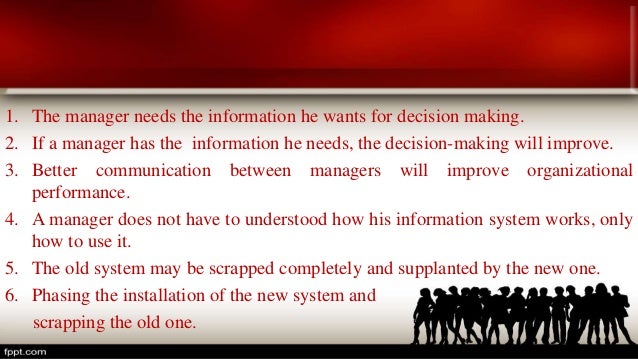Conversion Of Manual Mis Into Computerised Mis
- Conversion Of Manual Mis Into Computerised Mission
- Conversion Of Manual Mis Into Computerised Missing
Electronic Records Management Guidelines Electronic Document Management Systems Summary An electronic document management system (EDMS) is a software program that manages the creation, storage and control of documents electronically. The primary function of an EDMS is to manage electronic information within an organization’s workflow. A basic EDMS should include document management, workflow, text retrieval, and imaging. Not all EDMSs have records management capability. To qualify as a records management system, an EDMS must be capable of providing secure access, maintaining the context, and executing disposition instructions for all records in the system.
Conversion Of Manual Mis Into Computerised Mission

Conversion Of Manual Mis Into Computerised Missing
Characteristics of MIS Management Oriented Management Directed Common Database Common Dataflow Integrated Sub-System concept Heavy Planning element Flexibility Computerised. INFO1400 Chapter 2 Review Questions. Characteristics of management information systems (MIS) and explain how. The key business processes of an organization into.

Before implementing a system you must determine how it fits into your overall records management strategy. EDMS functionality is often integrated into Content Management (CM) systems. These systems combine additional functionality such as website management with workflow tools, standard templates and access rights. Legal Framework If you choose to use an EDMS, your selection requires a careful, considered balance between your legal requirements and your technological options. Use of an EDMS is not a panacea for implementing your electronic records management strategy. You should not assume that the requirements for a government agency are built into an EDMS. Tsele natsok rangdrol pdf merge.
In fact, the use of an EDMS can lead to records management problems, especially for government agencies with specific legal requirements. For example, an EDMS may improve collaboration during document development. However, the EDMS also may create multiple copies of a document and may not provide the access security you need to protect not-public records as defined by the Minnesota Government Data Practices Act ().
The decision to use an EDMS requires significant planning and analysis. Examine the advantages offered by an EDMS in light of your legal requirements as a government agency. For more information on applicable rules and statutes refer to the Legal Framework chapter of these guidelines and the Minnesota State Archives’. Key Concepts As you discuss the merits of an EDMS for your agency, you will need to be familiar with the following key concepts: • • • • • Government Standards Government agencies are subject to government regulations and guidelines in the selection of an EDMS. Federal guidelines are set forth in the Department of Defense, Design Criteria Standard for Electronic Records Management Software Applications. Bear in mind that even though an EDMS may meet all the Department of Defense guidelines, it may not meet all the requirements for the State of Minnesota and your agency. You must carefully examine if the EDMS supports: • Adequate security for the protection of not-public records • Adequate access to public records • Ability to capture and manage electronic records (if your EDMS has this function) in a way that meets legal requirements for parameters such as trustworthiness, completeness, accessibility, legal admissibility, and durability • All electronic formats included in the official definition of a government record Each vendor’s EDMS has different degrees of functionality.